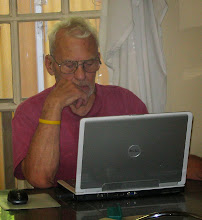If, during the course of duty you see that the New York Times has published a photograph or a news story demeaning your service, your mission or your personal conduct, don't take it seriously.
It really has nothing to do with your service; nothing to do with President Bush or Defense Secretary Rumsfeld, it is just the New York Times expressing its decades old hatred of the military. You see, when it comes to America's Armed Forces, The Gray Lady is no lady at all.
In 1946 I was assigned to Base K, AFWESPAC (Army Forces Western Pacific) at the village of Tacloban on Leyte, in the Philippine Islands. My job was running the Radio & Cable Section - a sort of message center that distributed all incoming messages to the proper organization, as well as sending all messages from the various Army units on Leyte.
I had a couple of G.I.'s and several Filipino civilians working in the office. We had an excellent relationship with the Filipinos. They taught me a lot about their culture, and even taught me a smattering of their local Bisayan dialect. I learned enough that I was later able to work the main gate, assissting Filipinos who had business with the Army.
In October of 1946, the New York Times sent a reporter to the Philippines. His story, under the dateline of October 20, 1946, said:
U.S. Manila Forces Held Slur On Army
The unchecked deterioration in the conduct and the appearance of the United States Troops here is doing inestimable damage to American prestige as well as alienating the people of this nation.
With morale at its lowest ebb, their carelessness in dress, their unconcealed dislike for the Filipinos and their slovenly demeanor, the American troops on occupation duties in the Philippines are being openly referred to as Ambassadors of ill will.
The reporter went on to accuse the G.I.s of breaking all traffic laws, wearing unpressed uniforms and unshined shoes, even of refusing to salute a superior officer.
When this message arrived at my office, it was retyped by one of my Filipino typists who wondered what in the world the newspaper was referring to. Okay, so we were not in Manila, but we saw none of what the Times reported. And, of course, the folks back home had no idea that not all of us were stationed in Manila.
The message of the Times news story was followed by a message from our commanding generals, who said: "This article has received such prominence in the last few days, that we, the Commanding Generals of AFWESPAC, 13th Air Force and Pacific Air Service Command, feel we must tell you, our soldiers that we believe this condemnation is unwarranted by the facts of our behavior and we resent this attack on you." The generals went into a great deal more detail, which I will not repeat here.
In case you wonder what we were doing in the Philippines at that time, I offer this: We had 10,000 Japanese POW's on Leyte, alone. They had to go home. We had hundreds of tanks, trucks, Jeeps and every other sort of supplies that had been on cargo ships on the way to the anticipated invasion of Japan. When the Japanese surrendered, this cargo was all dumped on Leyte. We had to properly dispose of this material.
Our relationship with the Filipinos was great. They openly adored the American soldiers, and we had great respect and admiration for them. They had suffered greatly at the hands of the Japanese. But, of course, the Times reported nothing of this.
Remind you of some of the stories coming out of Iraq? It should.

2 comments:
My father was stationed at Base K AFWESPAC, it turns out. I just digitized some of his photographs from 1946 and would be happy to share them with you if you'd like. What a happy coincidence! (Dad died in 2004, and I'm just now getting around to going through his photos).
--Phil Venditti; University Place, WA
(Son of Frederick P. Venditti)
Oh--if you'd like to get in touch with me, my email address is pvenditti@gmail.com .
Post a Comment